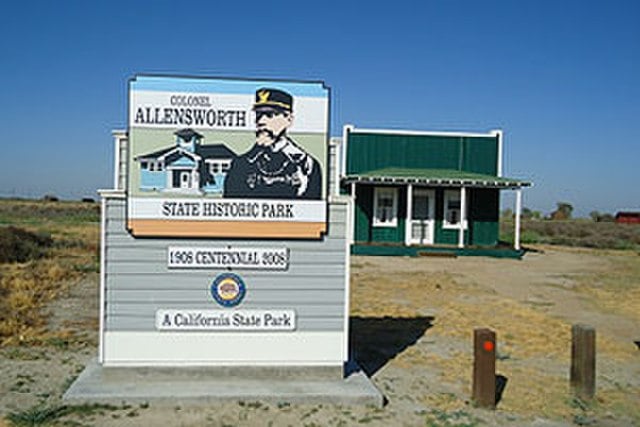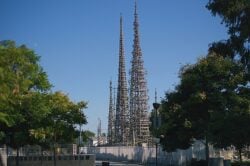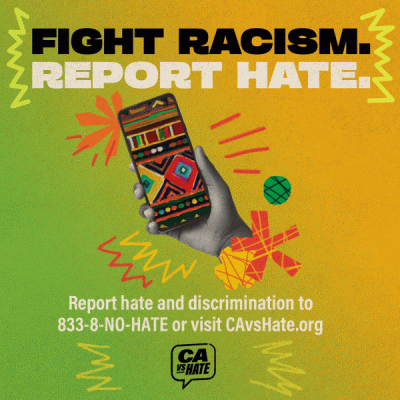
By Edward Henderson, California Black Media
The firestorms that ravaged Southern California have drawn attention to historically Black communities like Altadena, one of the first areas in Los Angeles County where Black families could buy homes during the Great Migration.
Before the fire, Altadena’s Black population was 18% with a Black homeownership rate of nearly 81% — more than the double the state rate of about 36.6%.
For Black History Month, California Black Media explores 14 other historically Black neighborhoods that thrived in the Golden State despite numerous challenges.
Note: This is not a comprehensive list.
1. Allensworth (Tulare County) – Founded in 1908 by Colonel Allen Allensworth and four other Black settlers, Allensworth was California’s first and only town established and governed by African Americans. However, Allensworth’s livelihood depended on a railroad company and water supply company. Eventually, the railroad company stopped service
to the town and the water company cut off the town’s water supply, leading most residents to relocate. Many of the town’s original buildings have been restored.

2. North Richmond (Contra Costa County) – Developed during World War II, North Richmond attracted Black workers to Kaiser Shipyards. One of the first downtown Black owned businesses was O.B. Freeman’s Shoeshine on Macdonald Avenue which became a popular gathering place for Black motor-bikers.
3. Oak Park (Sacramento County) – One of Sacramento’s oldest Black neighborhoods, Oak Park grew due to the lack of racial covenants that restricted Black land ownership during the Great Depression. It became a hub of Black culture and entrepreneurship. For example, renowned culinary artist George Dunlap opened a string of restaurants in the area, including Dunlap’s Dining Room, known for its Southern cooking.
4. West Oakland (Alameda County) – A major center for Black migration during WWII, known for its jazz scene and civil rights activism. The neighborhood was home to the Black Panther Party headquarters and a center of Black commerce and entertainment in the 1940s and 1950s. Seventh Street served as the cultural hub of the area and was lined with Black-owned businesses, including Slim Jenkin’s Place, one of the most popular jazz clubs in the area attracting big names like B.B King, Miles Davis, and Duke Ellington.
5. South Berkeley (Alameda County) –Black families moved to South Berkeley during the Great Migration for jobs at shipyards and railroad companies. In 1948, William Byron Rumford Sr. became the first African American elected to a state public office when he won an Assembly seat. Rumford owned a pharmacy on Sacramento Street, which was a hub for the Black community.
6. Bayview-Hunters Point (San Francisco County) – During WWII, the establishment of Hunters Point Naval Shipyard attracted an influx of African American workers. Around that time, 59% of the neighborhood’s population was Black. The area, which has a rich history of activism, remains the neighborhood with the highest concentration of Black San Franciscans.
7. Seaside (Monterey County) – The presence of the Black community in this area grew significantly due to the presence of Fort Ord, a U.S. Army base. By the 1960’s, Seaside had the largest concentration of American Americans between San Francisco and Los Angeles. Over a quarter of Seaside’s population was Black at the time.
8. Watts (Los Angeles County) – Famous for the Watts Towers, the city became a

Watts Towers in Los Angeles. PHOTO: Levi Clancy. Wikimedia Commons
significant hub for Black cultural and political movements. Watts became predominantly Black in the 1940s. War industries were a primary source of employment for new workers coming into Watts. The neighborhood is also known for the Watts Uprising, a series of protests in 1965 mainly opposing police brutality.
9. Ladera Heights, View Park and Baldwin Hills (Los Angeles County) – These adjacent neighborhoods are considered some of the wealthiest historically Black communities in the U.S. African Americans were not allowed to live in the area until 1948 when the Supreme Court ruled against racial restrictive covenants. By 1970, residents of the area were 75% Black. Celebrities including Ray Charles, Tina Turner, Nancy Wilson, Michael Cooper, Regina King and Issa Rae have called the area home. Ladera Heights, View Park and Baldwin Hills are often referred to the “Black Beverly Hills.”
10. Leimert Park (Los Angeles County) – A cultural and artistic center for African Americans, Leimert Park is known for its jazz heritage and Black-owned businesses. The area is home to one of the largest and oldest Juneteenth celebrations in the country.
11. Inglewood (Los Angeles County) – In 1960, only 29 of Inglewood’s population of 63,390 were Black. But by 1980, 56% of the city’s population was Black. “White Flight” from the area during the 1970s sparked the influx of Black residents. In 1983, Edward Vincent Jr. Became Inglewood’s first Black mayor. Inglewood has become a sports and entertainment hub under current mayor James Butts.
12. Southeast San Diego (San Diego County County) – The area is home to Bethel AME Church, the oldest Black church in San Diego, founded in 1887. Before gentrification and redevelopment began to intensify — beginning in the 1970s through the 2000s — the Imperial Avenue Corridor was known as a mini “Black Wall Street.”
13. The Fillmore District (San Francisco County) – Known as the “Harlem of the West,” the Fillmore community in San Francisco became a hub for Black businesses and art after World War II. Many Blacks migrated to the area because it was one of the areas in the city without a racist housing covenant. The Fillmore was renowned for its jazz scene, with famous clubs like Jimbo’s Bop city.
14. Compton (Los Angeles County) – In 1960, Compton’s Black population was 40%, a figure that was around 5% ten years prior. The rise in the area’s Black population was due, in part, to a real estate tactic called “Blockbusting” where real estate agents would induce White homeowners to sell their properties at reduced prices by suggesting Black families were moving into the neighborhood. Then, those agents would sell those homes to Black families at higher prices. In 1969, Compton elected Douglas Dollarhide, the first Black mayor of a major California city.


